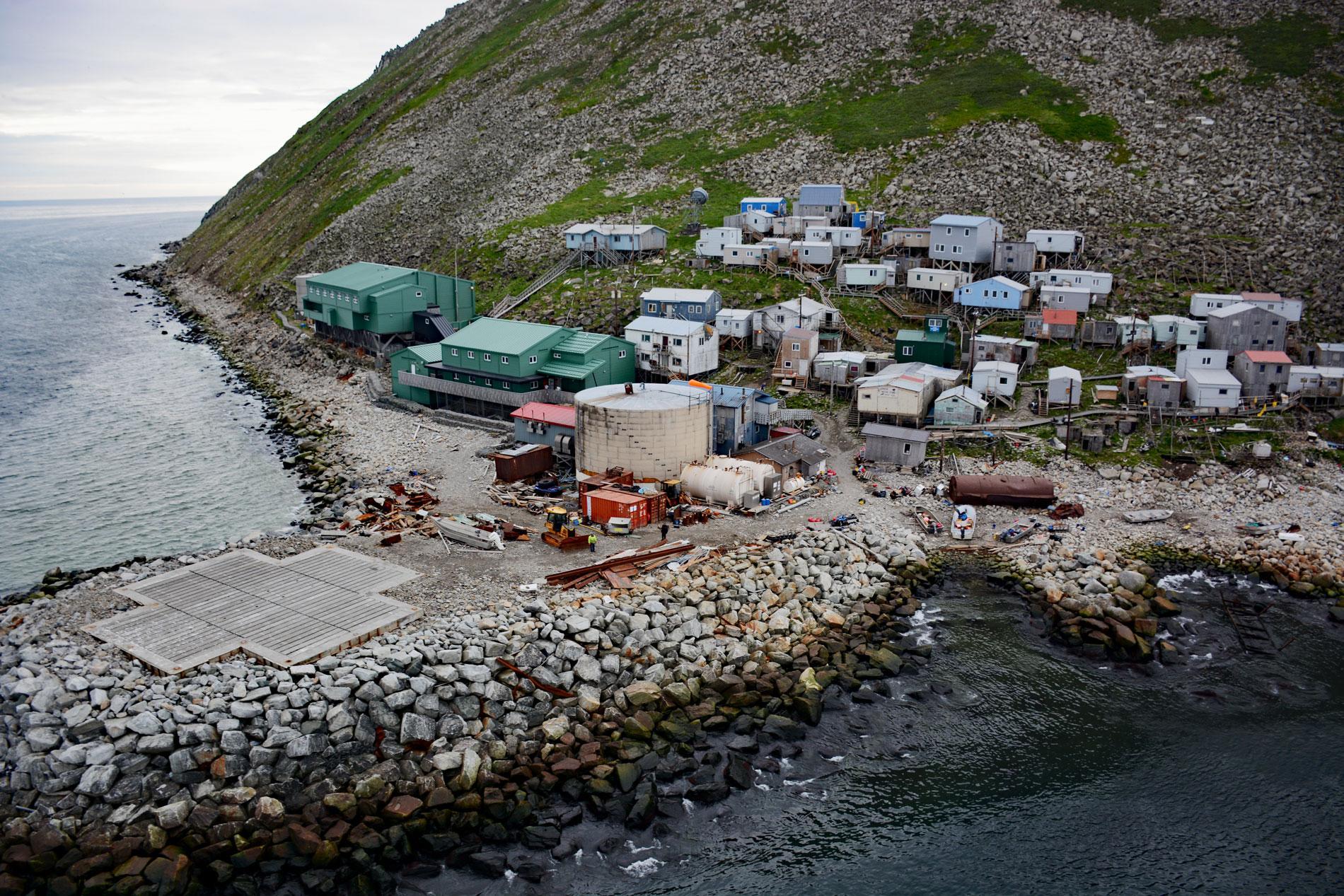Diomede is an Iñupiat community situated on the west coast of Little Diomede Island, less than 1 mile (1.6 km) from the International Date Line and 2.4 miles (3.9 km) east from the Russian island of Big Diomede, about 194 miles (312 km) southwest of Kotzebue and 27 miles (44 km) northwest of Wales, Alaska. The Diomede Islands are located in the middle of the Bering Strait between mainland Alaska to the east and Siberian Chukchi Peninsula to the west. To the north is the Chukchi Sea and to the south is the Bering Sea. The islands were named for Saint Diomedes of Tarsus by Danish navigator Vitus Bering who sighted the Diomede Islands in 1728, the day on which the Russian Orthodox Church celebrates the memory of the saint. In 1730, Mikhail Gvozdev, a surveyor who explored the Bering Strait, named them ‘Gvozdev Islands’. The Iñupiaq name for Little Diomede is Iŋaliq, meaning ‘the other one’ or ‘the one over there’. The islands represent geologic exposures of quartz monzonite plutons, igneous intrusions that developed between 112 to 85 million years ago.
The current location of Diomede village may be at least 3,000 years old. It was originally a spring hunting site and early Euro-American explorers found an advanced culture with elaborate whale hunting ceremonies. Accounts before 1850 refer to three villages with two on Big Diomede named Imaqliq and Kunga, and one on Little Diomede. People traveled freely between the islands and the Siberian and American mainland. The archaeological record of the time before the arrival of Europeans suggests the Diomede Islands were culturally more closely aligned with Asia than with America. It was from the Asian shore that the islanders acquired iron, beads, pipes and tobacco, fish nets, and several other items which they obtained via the Northeast Siberian trade network. When American whalers arrived in the Bering Strait around 1850, the focus of native interactions and resettlement generally shifted to the American continent. After 1850, the general pattern of migration was from west to east with people from East Cape, Siberia settling on Big Diomede; people from Big Diomede mostly moving to Little Diomede; and several Little Diomede families migrating to the Seward Peninsula. The eastward drift was mainly caused by economic incentives including American whaling operations and the new regional trade capital at Nome that developed following the gold rush of 1898.
In 1915, a Lutheran school opened on Little Diomede attracting families from Big Diomede and Siberia. In 1924, Soviet Communist officials imposed travel restrictions across the Bering Strait. Border posts were established, and foreign traders and visitors were banned from entry without special papers and visas. The remaining residents on Big Diomede responded by fleeing to the neighboring American island and by 1930 the two villages on Big Diomede were abandoned. Big Diomede is now uninhabited except for a Cold War-era Russian military installation. Today, the village on Little Diomede is the only settlement in the Bering Strait with a population in 2020 of 82, down from 115 in 2010 and 146 in 2000. The village has no water distribution system since the ground is solid rock; however, water is drawn from a mountain spring and stored in a steel tank for household use. Electricity is produced by diesel-powered generators and the fuel is barged to the community every summer. Read more here and here. Explore more of Diomede and Little Diomede Island here:

